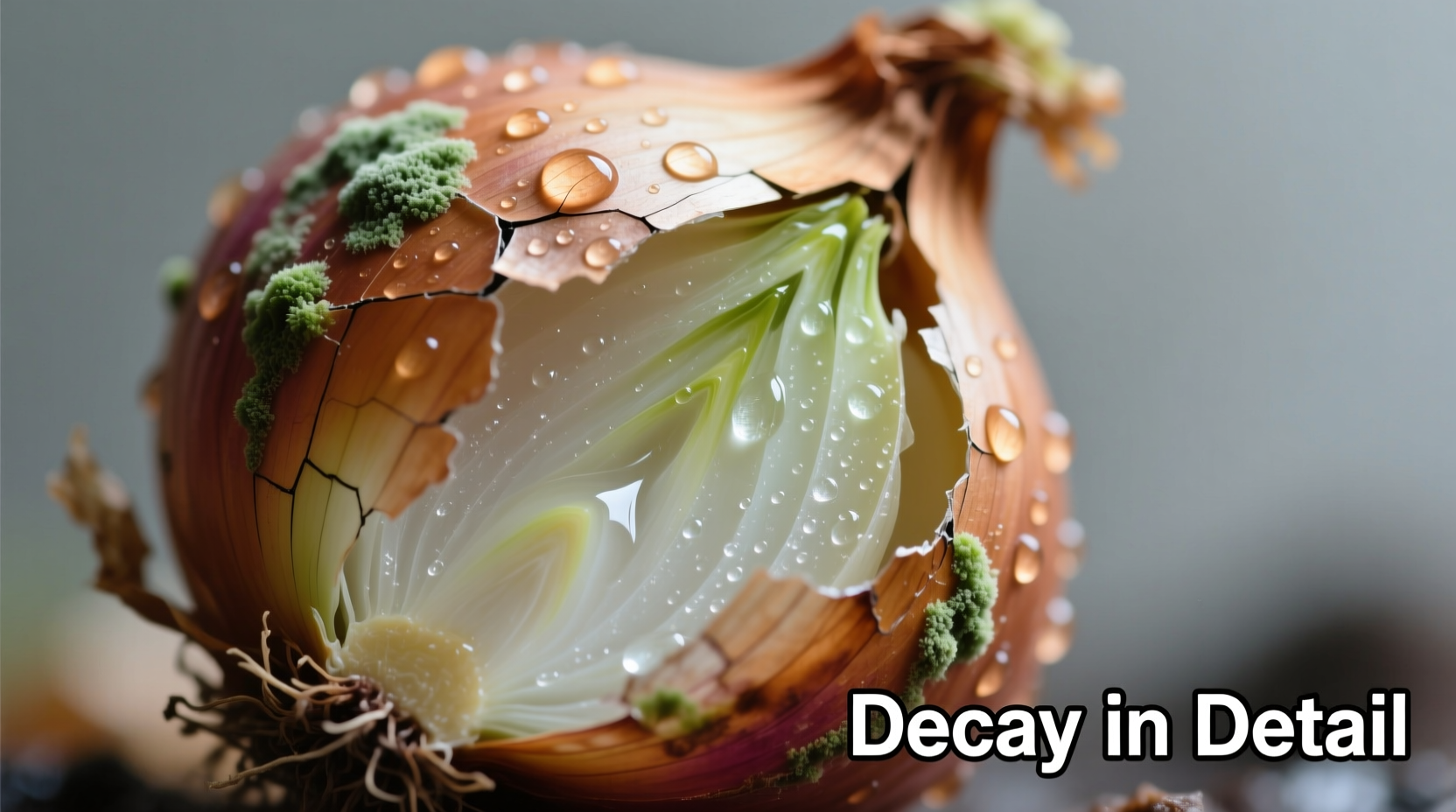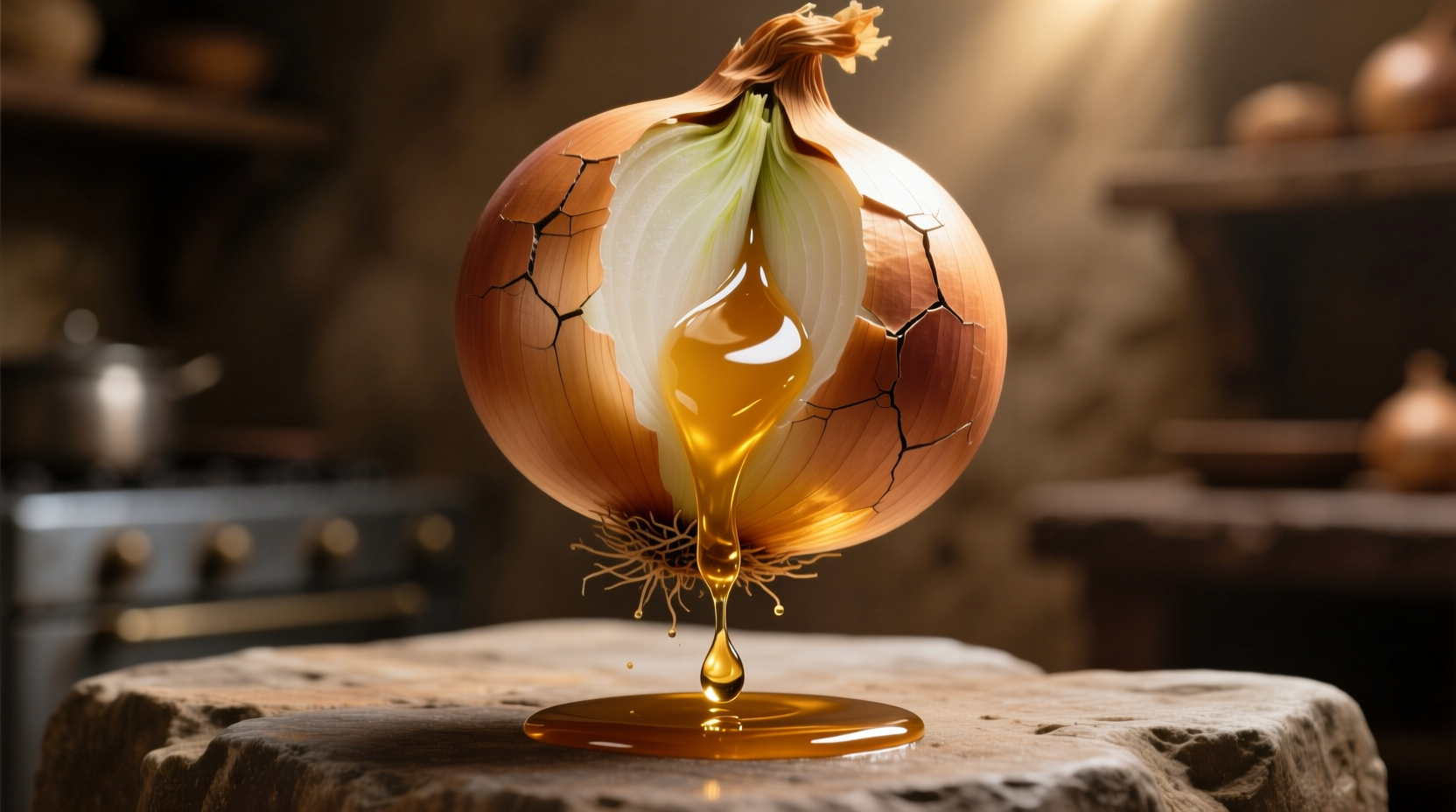Have you ever opened your pantry to find a single onion weeping mysterious liquid? You’re not alone. That “one giant onion leak’ phenomenon signals serious spoilage, not just an odd kitchen quirk. In this guide, you’ll learn exactly what causes onions to “leak,” how to spot early warning signs before it happens, and science-backed storage methods that extend freshness by 3–4 weeks. We’ll also clarify dangerous misconceptions that could lead to foodborne illness.
Why Onions “Leak”: The Science Behind Spoilage
When an onion appears to “leak,” you’re actually seeing advanced decomposition. Onions contain 89% water naturally, but spoilage occurs when:
- Cell walls break down due to enzymatic activity after harvest
- Microbial growth (like Penicillium or Aspergillus molds) consumes internal sugars
- Moisture migration happens from inner layers to the surface
According to USDA food safety guidelines, this liquid often contains harmful bacteria like Salmonella or E. coli that thrive in the onion’s pH-neutral environment. Never consume “leaking” onions—the risk of food poisoning is significant.

Spotting Trouble Before the Leak Begins
Catch spoilage early with these visual and tactile indicators. Cornell University’s Food Science Department identifies these progressive stages:
| Stage | Visual Clues | Action Required |
|---|---|---|
| Early Spoilage (Days 1-3) | Slight softening at root end, dull skin | Use within 48 hours |
| Advanced Spoilage (Days 4-7) | Visible moisture beads, mushy patches | Discard immediately |
| Critical Spoilage (Day 8+) | Pooling liquid, mold growth, foul odor | Seal in plastic bag before trashing |
Proper Onion Storage: What Actually Works
Contrary to popular belief, refrigeration often accelerates spoilage for whole onions. UC Davis’ Postharvest Technology Center confirms optimal conditions require:
- Dry environment (65–70% humidity)
- Cool temperature (45–55°F / 7–13°C)
- Good airflow (never sealed containers)
For home kitchens without climate control, use these practical solutions:
- Pantry storage: Place in mesh bags hung in a dark, ventilated space (lasts 2–3 months)
- Refrigeration exception: Only for cut onions (store in airtight container for 7–10 days)
- Freezing method: Chop, spread on baking sheet, freeze solid, then transfer to bags (6 months)
When Storage Methods Fail: Context Matters
Not all onions behave the same. These factors dramatically impact shelf life:
- Varietal differences: Yellow onions last longest (100+ days), while sweet varieties like Vidalia spoil in 30 days
- Climate considerations: Humid regions require extra desiccant packets in storage areas
- Cut vs. whole: Once cut, enzymatic browning accelerates regardless of storage method
The FDA warns against storing onions near potatoes—they emit ethylene gas that speeds spoilage. Keep them in separate areas of your kitchen.
Food Safety Protocol for Spoiled Onions
If you discover a “leaking” onion:
- Wear disposable gloves during cleanup
- Place spoiled onion in sealed plastic bag before discarding
- Sanitize surfaces with 1:10 bleach-water solution (EPA recommendation)
- Wash hands thoroughly for 20 seconds
Never attempt to “save” part of a leaking onion. The USDA’s FoodKeeper app confirms pathogens can migrate beyond visible spoilage zones.
Extending Freshness: Advanced Techniques
For serious onion lovers, these professional methods add weeks to shelf life:
- Curing process: After harvest, dry onions in shaded, breezy area for 2–3 weeks
- String storage: Braid stems and hang in cool basement (traditional method validated by Penn State Extension)
- Clay coating: Dip in kaolin clay slurry, dry completely (reduces moisture loss by 40%)
Remember: These techniques work only for undamaged onions. Any nicks or bruises create entry points for decay.
Debunking Common Onion Myths
Let’s correct dangerous misconceptions:
- Myth: “Refrigeration always extends onion life”
- Fact: Cold temperatures increase moisture retention, accelerating rot in whole bulbs
- Myth: “Sprouted onions are unsafe to eat”
- Fact: Sprouts are edible but indicate declining quality—use immediately
- Myth: “Onions absorb kitchen bacteria”
- Fact: This viral claim lacks scientific basis—onions don’t “purify” air











 浙公网安备
33010002000092号
浙公网安备
33010002000092号 浙B2-20120091-4
浙B2-20120091-4